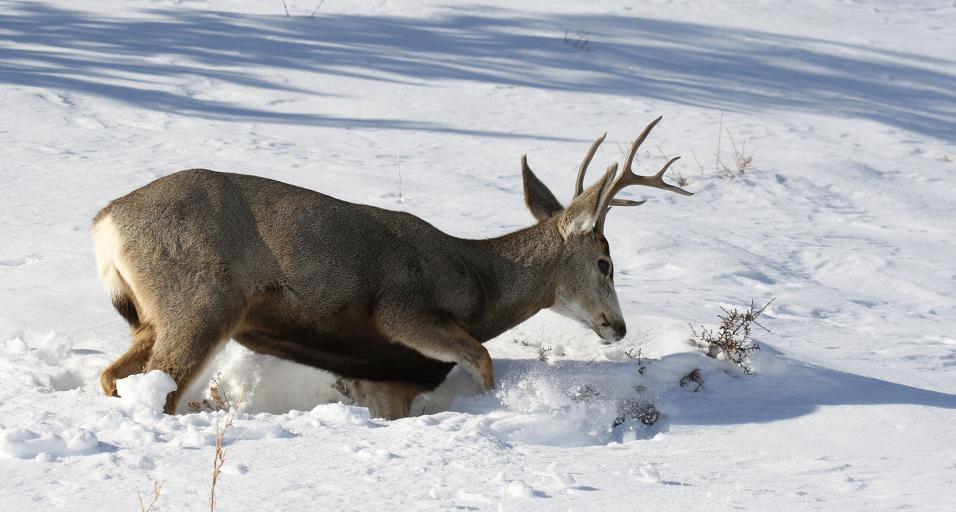After two relatively mild winters, western Wyoming is now experiencing more traditional winter conditions with above-average snow in many places and continued cold temperatures that began in early December. Wyoming Game and Fish biologists and wardens are closely monitoring how big game herds are faring and are reminding everyone to be mindful of these animals as they endure this hardest part of the year.
“We’re not seeing significant mortality yet, but if winter conditions continue as is, we are likely to see above-average mortality for both mule deer and pronghorn,” said Pinedale Region Wildlife Supervisor John Lund. “Now is the time to give these animals a break to increase their chance of making it through the long winter ahead.”
Wildlife managers suggest these best practices to help wintering wildlife:
· Leave fence gates open wherever possible to allow unimpaired movement of animals across the landscape, especially along roadways so animals can avoid a potential vehicle collision. This can also help reduce damage to fences and prevent animals from getting entangled and dying. Many landowners have modified their fences to make them more wildlife-friendly by replacing the bottom wire with a smooth wire and lowering the top wire or adding a pole to the top. The Wyoming Game and Fish and their many partners have converted nearly 700 miles of traditional fence to wildlife-friendly fence in the Pinedale area alone.
· Avoid snowmobiling or recreating on low-elevation winter ranges, but rather opt for the high country with deeper snow where animals are less likely to be disturbed.
· Resist the urge to feed wildlife to “help” them through the winter, as it typically does more harm than good. Feeding can result in increased potential for disease transmission, as well as conflicts with people, pets, and traffic due to high densities of animals in developed areas.
· Similarly, protect and make stored hay crops and pet feed unavailable to wildlife, especially alfalfa. While game animals will readily eat these foods, they may not be able to metabolize them, and will often end up dying with a full stomach.
· As motorists, plan ahead, drive slower and pay close attention for animals along our roadways. Wildlife-vehicle collisions occur at a higher rate during the winter months and research has shown that slowing down, even just five miles-per-hour can greatly increase a driver’s reaction time to avoid a collision. This is especially important at dawn and dusk when animals are more active and harder to see.
The Wyoming Game and Fish also reminds everyone there is an antler hunting regulation in place that prohibits the gathering of shed antlers from January 1 through April 30 on all public lands, primarily west of the Continental Divide, but including some public lands east of the Continental Divide in the Laramie Region (see map).
In addition, many big game winter ranges in both Teton and Sublette counties have further restrictions to either human presence or motor vehicles during the winter months. However, the shed antler regulation applies to all federal or public lands in Teton and Sublette counties, even lands that may not be covered under additional winter range closures.
Similarly, Wildlife Habitat Management Areas managed by the Wyoming Game and Fish Department in the Jackson and Pinedale regions are closed to human presence December 1 through April 30.
As with other laws and regulations, enforcement and public cooperation are key to effectiveness. Anyone witnessing a wildlife violation may call the Stop Poaching hotline at 1-877-WGFD-TIP. Stop Poaching tips can also be reported online. Tips may result in a reward and informants can choose to remain anonymous.
For more information on how to properly live with wildlife you may contact the Wyoming Game and Fish Department office at 307-367-4353 in Pinedale or 307-733-2321 in Jackson.



